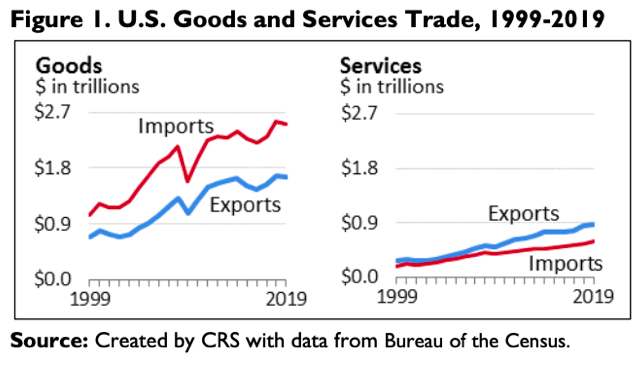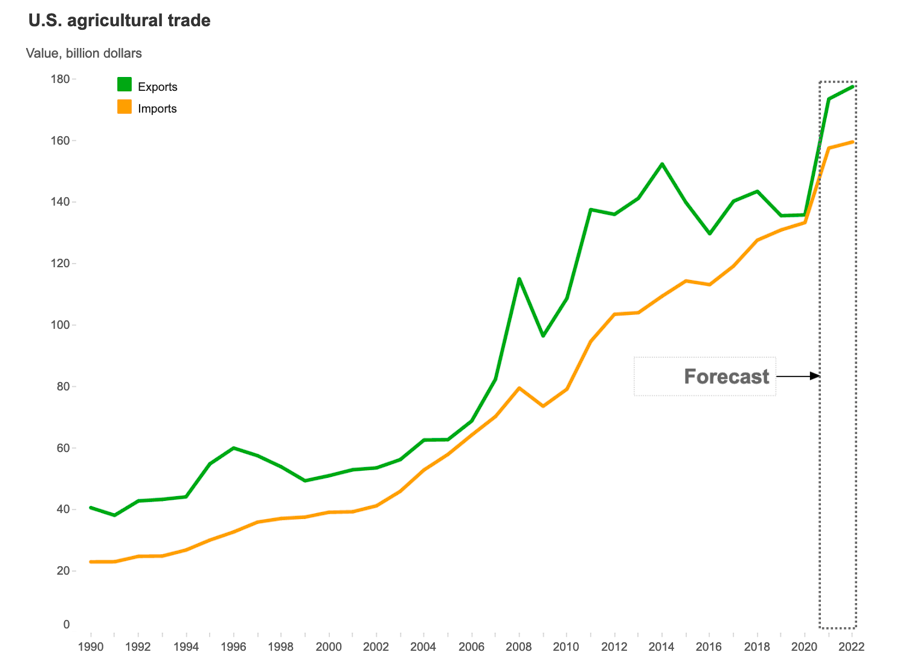John Phipps: The Truth Behind the Numbers in Calculating Agriculture's Trade Balance
U.S. Farm Report 04/09/22 - Customer Support
Viewer Darrell Boone in Wabash, Ind. has a question regarding the agricultural trade balance:
“For as long as I can remember, U.S. ag exports have been the bright and shining star of U.S. foreign trade--one of the few sectors to have a positive trade balance. Do you believe this forecast [negative ag trade balance] is correct, and if so, what happened and why? And what are the implications for farmers?”
First, and foremost, any trade balance has dubious value, and only limited prediction power. Other than bragging rights, they mean little. There is no trophy or economic advantage for having a positive trade balance. Some of our best economic periods have been times of significant negative trade balances. In fact, the absolute best way to reduce a trade deficit is have a recession and out a lot of people out of work. If it is important to you, notice the forecast is for it to rise again this year.

Second, this trade balance calculated in value – dollars – because you can’t use volume when you’re shipping everything from almonds to frozen beef. Some very high value products included in this trade balance have a big influence even though they don’t pop to mind for farmers. Spirits, beer and wine - which I’ve lumped together as liquor, may be the best example. We import lots of wine from Europe and increasingly places like Australia and New Zealand. The same for beer and spirits. The grain is mostly from Canada, and the oilseed include olive oil, which has become a very valuable import.


Finally, ag doesn’t seem to me to be the bright and shining star of U.S. trade. It’s our service sector – finance, insurance, education, etc. Its trade surplus is over 10 times the ag surplus. Since almost nobody in ag is aware of that fact, how much should we worry about the ag trade balance? Americans tend to focus on stuff, not other forms of trade, but almost 80% of our workers are employed in service industries. A negative balance of trade has long-term implications according to economists, but during my life it has indicated our consumers are working and buying, and our dollar is a highly desired form of wealth.







